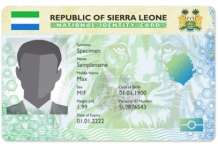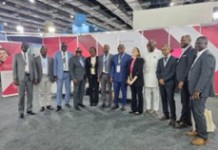By Amin Kef Sesay
Sierra Leone’s economic recovery from the Ebola epidemic, with a revenue loss equivalent to 29% of the country’s GDP, according to the (WHO), and the drop in the prices of iron ore and eventual closure of the mines meant that government had to rely heavily on internal and external debt to pay salaries and to meet other recurrent and capital expenditures that the budget could not cover.
A similar scenario has repeated itself this year since the COVID 19 outbreak, with economic performance far lower than what was predicted by the finance minister in January 2020.
Whilst the New Direction’s medium-term objective is to bring inflation down to single digits through continuing to implement the National Development Plan (NDP), which gives priority to macroeconomic stability, infrastructural development and the maintenance of key social programmes (free education, health, social protection). The National Agricultural Transformation Programme 2019/2023 aims to double agricultural production. According to the IMF, GDP growth has accelerated to 5.1% GDP in 2019, driven by agricultural, mining and construction activities.
IMF’s updated forecasts from 14th April 2020 states that due to the outbreak of the COVID-19, GDP growth is expected to fall to -2.3% in 2020 and pick up to 4% in 2021, subject to the post-pandemic global economic recovery.
In 2019, the progress made under the IMF-supported program within the Extended Fund Facility has contributed to stabilizing the economy, but the situation remains difficult.
Despite efforts to mitigate the rise in debt, it remains substantial, and Sierra Leone is classified as being at high risk of debt distress.
In 2019, public debt stood at 64.5% of GDP and is expected to remain high in 2020 (65.4%) and 2021 (65.9%) (IMF).
The overall fiscal deficit improved from 5.8% GDP in 2018 to 3.5% GDP in 2019, but is financed in part by the accumulation of arrears, which currently stand at 10% GDP (AfDB).
Although declining, inflation remains high (it was 14.8% in 2019) and is expected to remain above the ECOWAS convergence criterion (10%) in 2020 (15.4%) and 2021 (15.3%), according to the latest World Economic Outlook of the IMF (14 April 2020).
The current account deficit, -18.7% of GDP in 2018, improved to an estimated -13.9% in 2019, but is projected to increase to -14.3% in 2021, according to the latest IMF forecasts.
The exchange rate depreciated by 47% between 2016 and 2019, reflecting increased uncertainty, following the suspension of the licences of the two main mining companies in mid-2019 (AfDB).
In line with the agreement reached with the IMF, the government is committed to deficit reduction and debt relief through expenditure reduction and revenue maximization.
As such, the 2020 budget tried to strike a balance between meeting development needs and managing a tight fiscal situation. It could not and had to come up with a supplementary budget in July.
Unemployment (4.4% of the workforce in 2019 according to the World Bank, modelled ILO estimate), high poverty levels (especially in rural areas) and lack of infrastructure, corruption as well as social unrest continue to hamper the country’s economic development.
Unemployment among young people reached 50% and more than 90% of the population have vulnerable jobs. The Human Development Index ranks Sierra Leone 181th out of 189 countries.
Financially and economically, in order not to sink deeper into the pit of debt, the government and its financial development partners have to pave the way forward in the post-COVID-19 period, which is marked by an increase in poverty and social tensions, exacerbated by inflation and a sharply deteriorated Leone.






